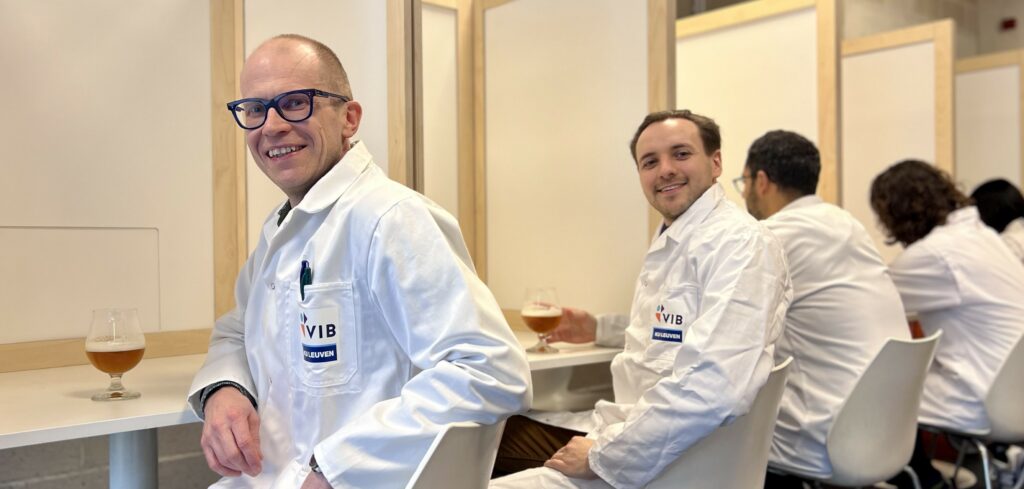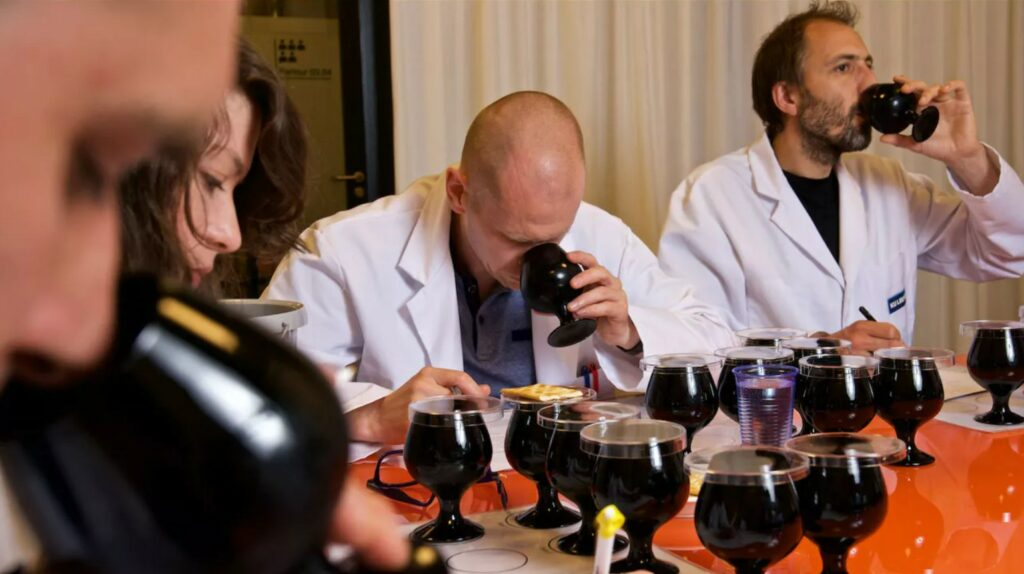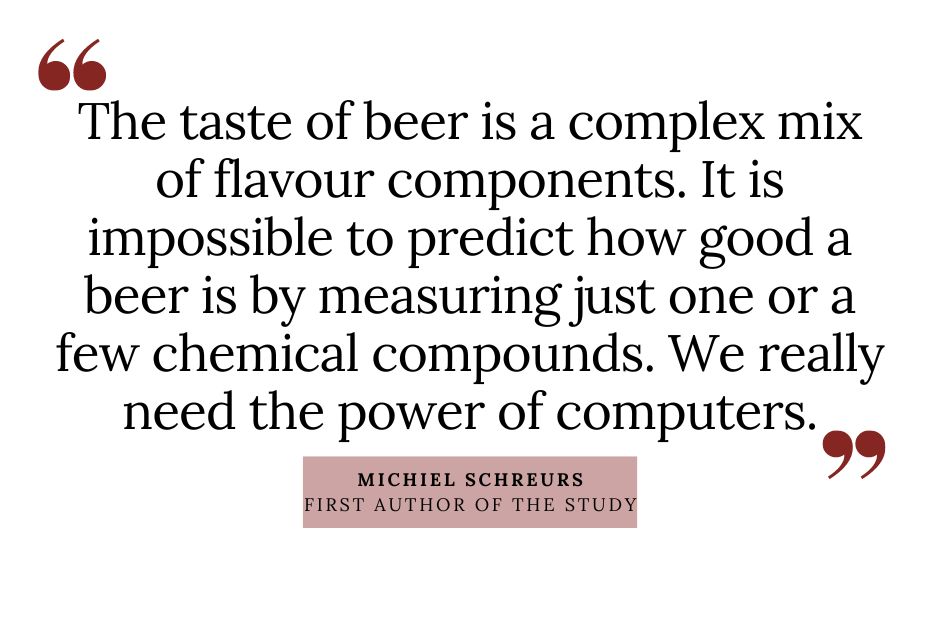Belgian scientists have found the secret ingredient to improve the taste of classic Belgian beers: artificial intelligence (AI). Their research, published in the renowned journal Nature, could revolutionise the way in which beer is brewed.
Researchers from the Flemish Institute of Biotechnology (VIB) and KU Leuven used machine-learning algorithms to predict the taste and quality of beer, and to determine which compounds brewers could use to improve their flavours – essentially, to brew beer that (almost) everyone likes.
"We first trained a machine to predict the taste of beer," Michiel Schreurs, lead author of the study, told The Brussels Times. "To do that, we needed data on the taste of beers first, so we gathered tasting notes from a panel of 16 tasters while at the same time using online reviews from the RateBeer database."
With his colleagues, Schreurs spent five years characterising over 200 chemical properties from 250 Belgian commercial beers across 22 beer styles, such as Blond, IPA, Geuze and Tripel beers. "There is quite some diversity within Belgian beers already, and if we made the scope too broad we would need much more data."
Boosting Belgian beer
The group used 70% of the data set to create the model and give the computer information about the chemical compounds in beer as well as online beer review scores. Then, they fed the computer the remaining 30% of the data to predict how certain beers would taste and how much people would like it, based on the chemical compounds and the review scores.
"For real taste attributes, such as how bitter, sweet or acidic a beer is, the model worked very well," Schreurs said. "That data came from our own panels (trained professionals), meaning it was quite consistent in scoring these basic attributes."
When it came to predicting appreciation of a beer from the researchers' trained panel, however, the computer performed very badly. "This was probably because we only had 16 people in the panel for this study, and not all of them tasted every beer. This leads to some variations. And taste is also still very subjective."

Director of VIB- KU Leuven Centre for Microbiology Kevin Verstrepen (Left) and Michiel Schreurs (Right) during a taste test. Credit: VIB
"We noticed that it is difficult when there are very few people. However, when we gave the machine the RateBeer reviews data from thousands of people pooled together, the model performed reasonably well," Schreurs added.
While predicting appreciation is nice, it is not very useful. And so, by using commonly available machine learning tools, the researchers set out to find a way to teach the computer how to boost or enhance the flavour of certain beers.
"These tools tell you what the computer learns and what it is basing its decisions on. It gave us the compounds that predicted whether a beer tasted good," Schreurs said. "By adding these compounds to existing beers, we managed to improve their taste."
No beer revolution
These are never big changes, Schreurs stressed: "For example, if we add a compound to a Leffe beer, people would still recognise it as a Leffe beer. But overall, people will like it a bit more."
In theory, it would be possible to look at a subset of one style of beer, or figure out which beer would be preferred by men or women, or by Europeans, Asians or Americans. "But we averaged out the reviews and set it up to make the beer most liked by everyone."
Schreurs emphasised that the aim was to see if there was any potential in machine learning for food and flavour research. "Our project is a proof of concept; it is not really about the beer. We will not be selling this model or revolutionising the industry. We wanted to show that there are a great deal of applications for machine learning in the food industry."
Strikingly, the researchers noticed that certain flavours – which brewers usually try to avoid because they give many beers a bad flavour – seem to be important to add, but only at very low concentrations.
"Some of these are flavours that brewers have been trying to get rid of for hundreds of years, but in very low concentrations they actually add to the likability, complexity and depth of beers," said Schreurs.
Examples of these compounds include dimethyl sulfide, which smells and tastes a little like cooked cabbage or cooked corn, and diacetyl, which has an intense buttery flavour. "We found that they should be added in very low concentrations. Too much ruins the beer and makes it taste chemical."
Finding the right balance was the hardest part, Schreurs underlined. "Only by using a mixture of different compounds could we add each component at a low enough concentration to not overdo it. In the end, we added seven different aroma compounds. Combined, it did make a noticeable difference to the number of people who liked the beer. We really managed to improve the taste of some Belgian beers."


